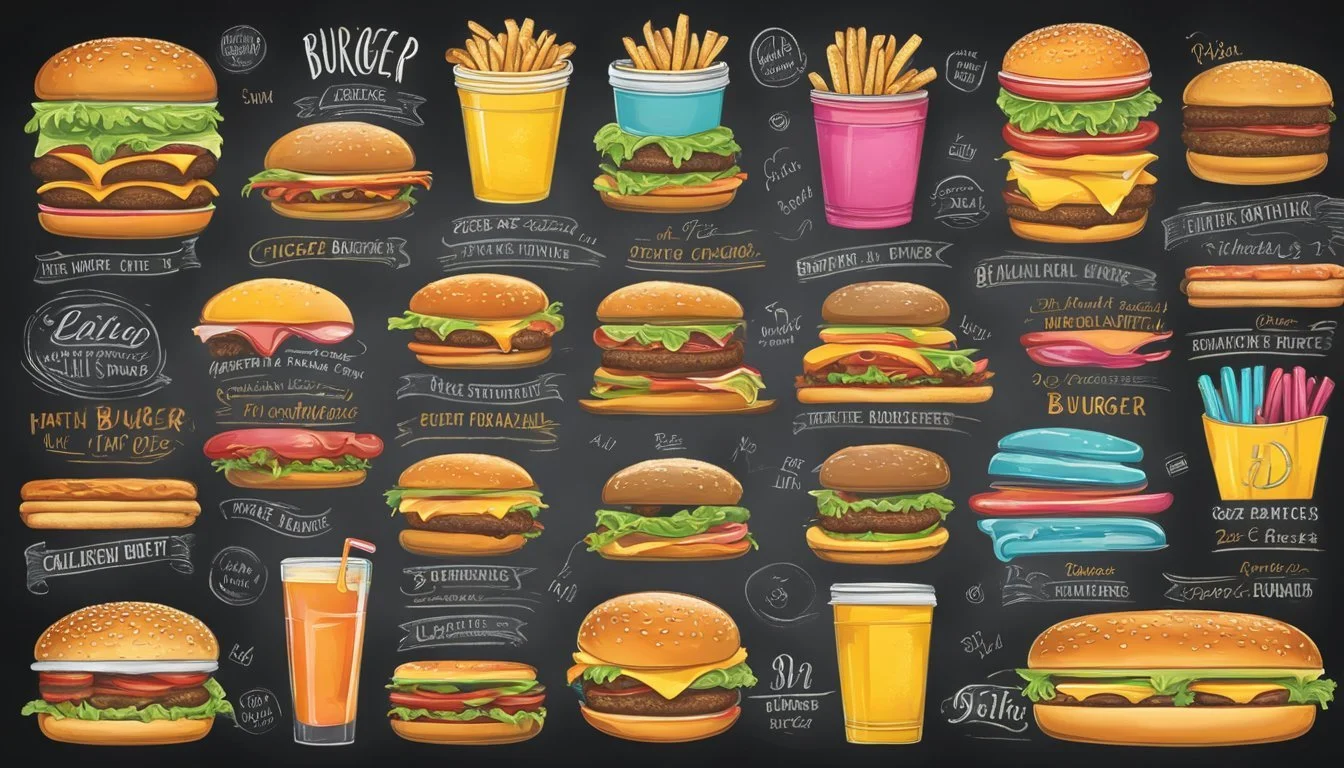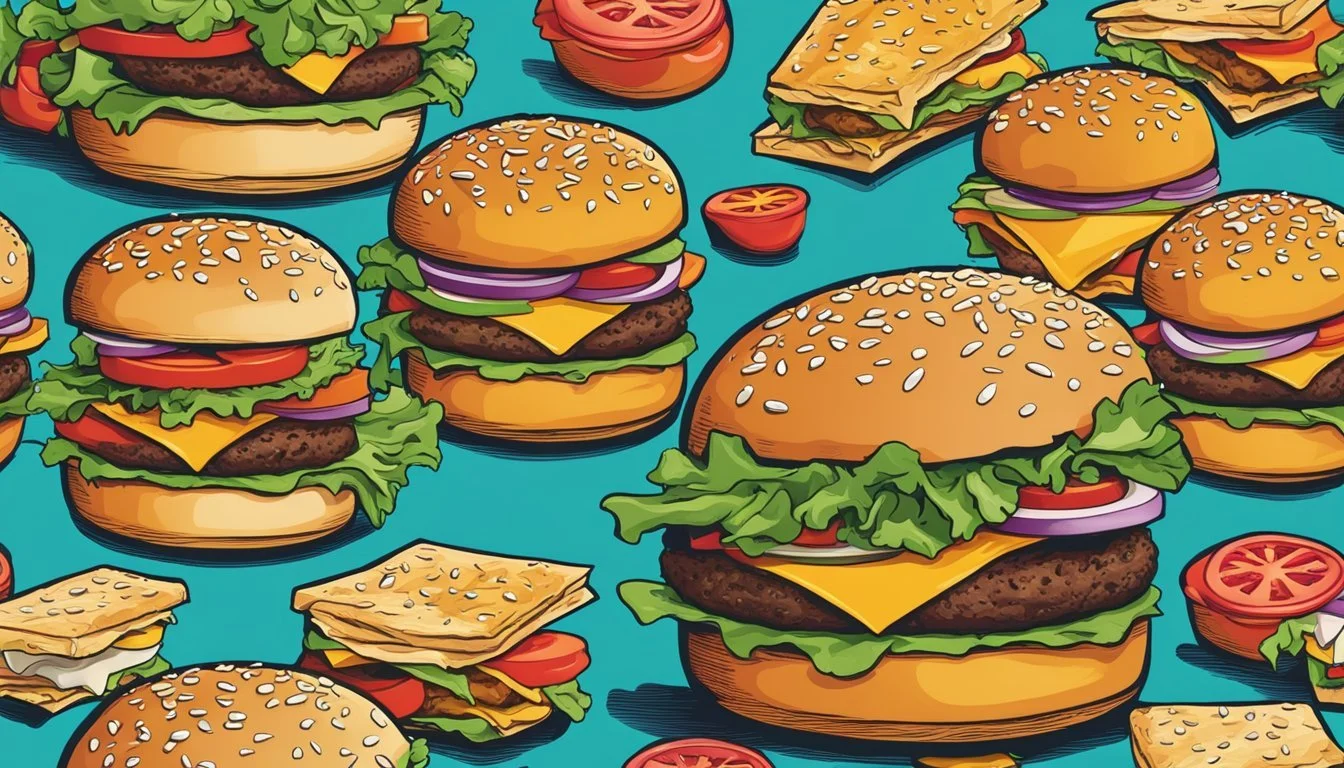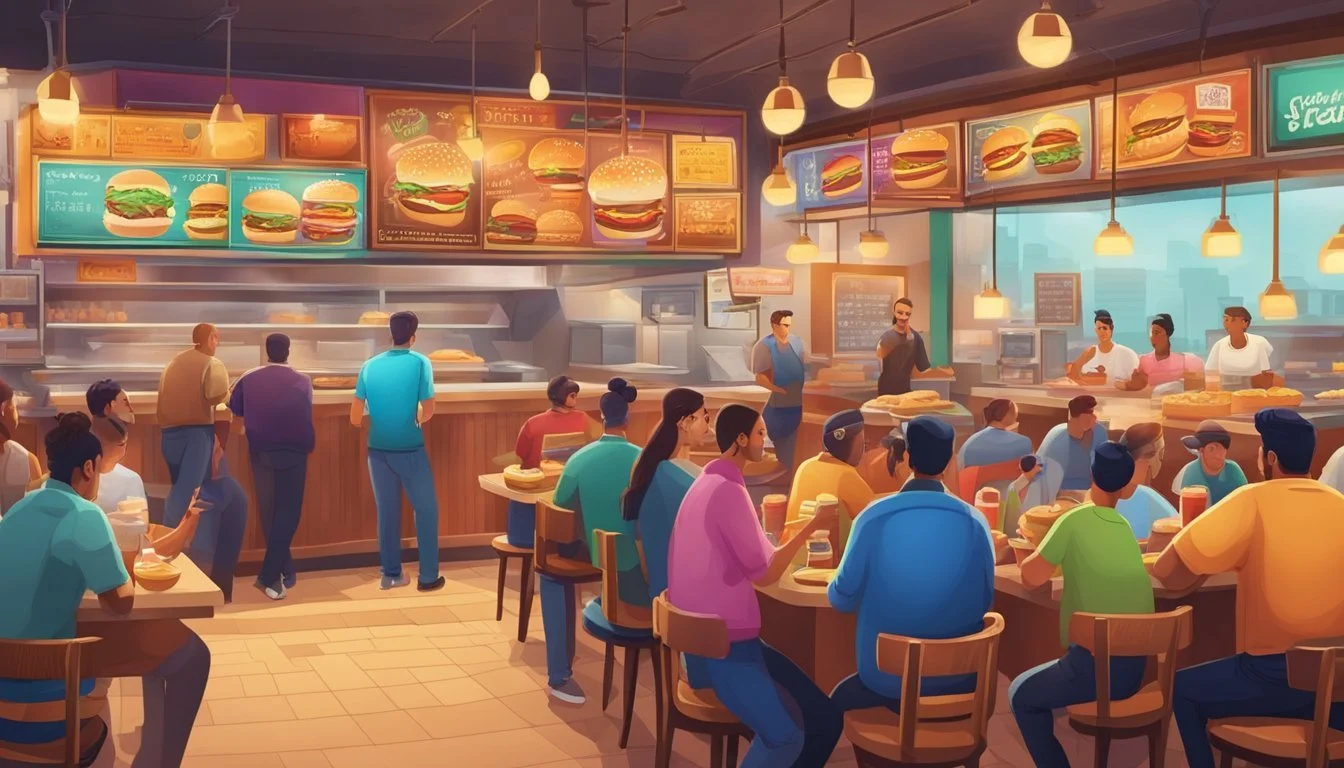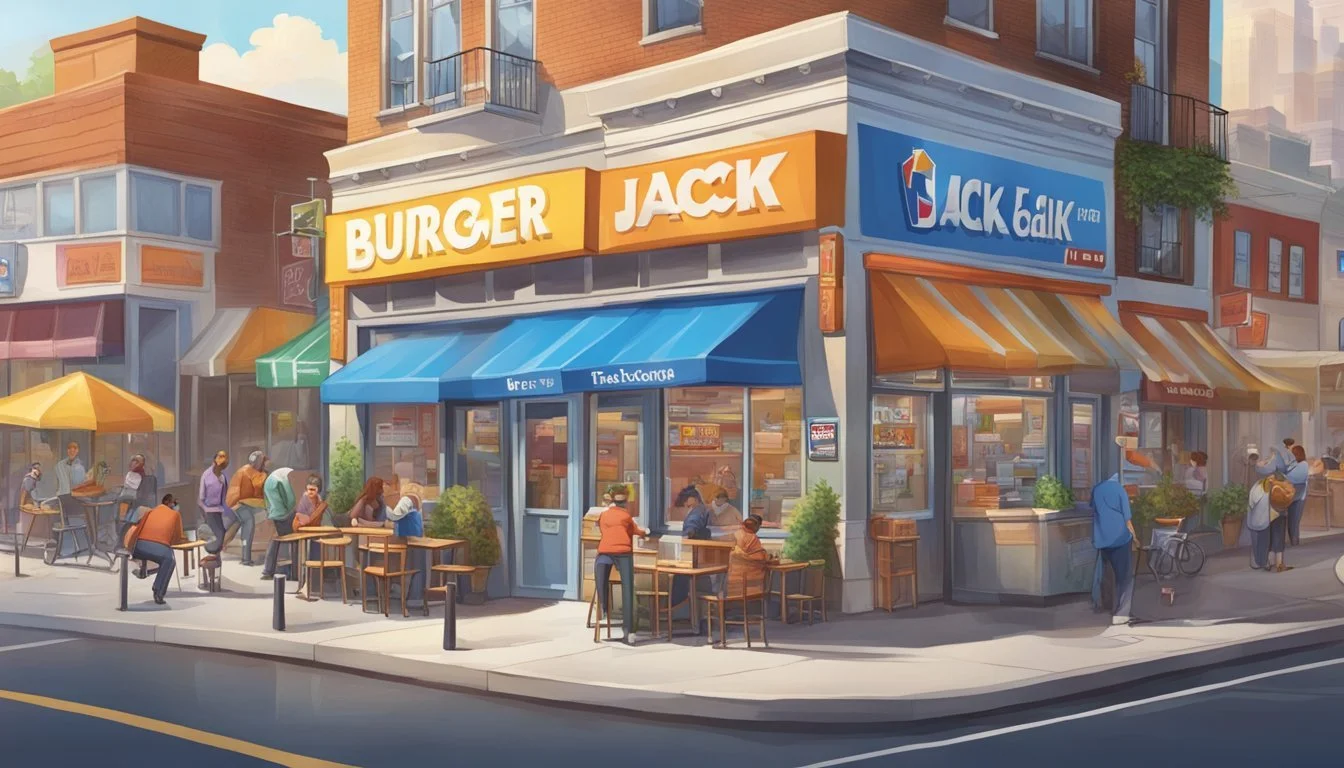Jack in the Box vs White Castle
Unveiling the Superior Burger Destination
In the realm of fast food, the burger reigns supreme, and among the numerous chains that dot the landscape, Jack in the Box and White Castle stand out. They each present a unique approach to serving their iconic burgers, a distinction that reflects in their respective customer bases. Jack in the Box is known for its broad menu, offering a variety of burger options and toppings, catering to customers looking for customization opportunities in their meals. Its hamburgers have gained a following for their juicy patties and diverse range of available condiments and add-ons.
On the flip side, White Castle has carved a niche with its instantly recognizable sliders. These small, square burgers have a dedicated fanbase, with an emphasis on simplicity and speed of service. The brand leans on a long-standing tradition of serving these miniature sandwiches, focusing on the uniqueness of the White Castle dining experience as opposed to a wider selection of menu items.
The comparison between Jack in the Box and White Castle extends beyond their menus, touching upon aspects such as brand identity, customer loyalty, and overall dining experience. Each brand brings its strengths to the table, from Jack in the Box's versatile offerings to White Castle's classic and cultural appeal. Determining which burger joint is better is a matter of weighing these factors and understanding the different expectations customers have when they choose where to dine.
History and Evolution
When tracing the roots of American fast food culture, Jack in the Box and White Castle stand out for their innovative approaches that reshaped the industry. Each brand's story offers insight into the emergence of quick-service dining and the hamburger's role in this evolution.
Origin of the Jack in the Box
Jack in the Box burst onto the American fast food scene in 1951, when Robert O. Peterson opened the first location in San Diego, California. This early form of the drive-thru restaurant featured a whimsical clown head where customers would place their orders using an intercom system — a novel concept at the time that attracted attention and facilitated ease of service.
White Castle's Founding
White Castle holds the distinction of being among the first fast food hamburger chains in America, with its inception dating back to 1921 in Wichita, Kansas. Founders Billy Ingram and Walter Anderson pioneered the concept of the hamburger as accessible and affordable fare, challenging pre-existing perceptions fueled by Upton Sinclair's "The Jungle", which had cast a shadow on the meatpacking industry. They focused on creating a clean, streamlined appearance for their restaurants and standardized burger production methods that enhanced customer trust in their product.
Impact on Fast Food Culture
The trajectories of White Castle and Jack in the Box have left indelible marks on the fabric of American fast food culture. White Castle was a trailblazer in popularizing the sale of the hamburger, a dish that would become symbolic of America's culinary identity. Its model of efficiency and uniformity paved the way for numerous fast food chains to follow. Jack in the Box, on the other hand, was instrumental in revolutionizing the drive-thru eating experience, aligning perfectly with the burgeoning car culture of post-war America. Both entities exemplified a burgeoning shift towards quick, affordable dining options that would soon define the national eating habits.
Menu Comparison
When assessing the menus of Jack in the Box and White Castle, one should consider the variety, iconic offerings, and the nutritional content of their burger selections.
Burger Varieties at Jack in the Box
Jack in the Box is known for an extensive variety of burgers, including the Jumbo Jack—a substantial hamburger featuring a beef patty, lettuce, tomato, pickles, onions, mayo-onion sauce, and ketchup on a buttery bun. This range includes cheeseburgers and variations with bacon, jalapeños, and other toppings to cater to diverse tastes. The calorie count of Jack in the Box's hamburgers ranges widely, with options like the Jumbo Jack, which typically has higher calories and fat content than some fast food burgers, while also offering a satisfying protein boost.
White Castle's Slider Selection
White Castle's claim to fame is the Original Slider—a small, square hamburger or cheeseburger that is easy to eat on the go. Their sliders are simplistic yet iconic, consisting mainly of a small beef patty, steamed onions, and pickles on a soft bun. In terms of nutritional value, a single Original Slider without cheese has relatively lower calories and fat content when compared to larger fast food burgers, making it an appealing option for those watching their calorie intake.
Nutritional Value
In nutritional terms, Jack in the Box and White Castle offer varied options to cater to different diet preferences.
Jack in the Box:
Jumbo Jack: Higher in calories and fat, but also provides more protein.
Cheeseburger: Adds calories and sodium but also offers protein and calcium.
White Castle:
Original Slider: Lower in calories compared to typical fast food hamburgers, making it a cognizant choice for a moderate calorie count.
Cheese Slider: Increases calories, fat, and sodium slightly, but the addition of cheese offers extra protein and calcium.
The menu options show clear differences in their culinary approach to fast food burgers. While Jack in the Box focuses on more traditional, larger-sized hamburgers, White Castle emphasizes the convenience and nostalgia of their bite-sized sliders. The nutritional content of their offerings reflects the intended portion size and ingredient simplicity.
Food Quality and Ingredients
When it comes to food quality and ingredients, both Jack in the Box and White Castle have distinctive approaches to assembling their burgers, with each restaurant prioritizing the source and quality of meat and the freshness of toppings.
Meat and Protein Sources
Jack in the Box offers a variety of burgers that typically feature one or more beef patties as the source of protein. At the heart of their menu is the Jr. Jumbo Jack, consisting of a beef patty that provides a balance of flavor and protein content with 14 grams per serving.
In contrast, White Castle is renowned for its small, square sliders that also utilize beef as the main protein. The beef used in White Castle's sliders is steam-grilled over a bed of onions, which imparts a unique flavor profile to the meat.
Freshness and Toppings
Both establishments adorn their burgers with an assortment of toppings. At Jack in the Box, customers can customize their burgers with fresh lettuce leaves, tomato slices, pickles, ketchup, mustard, and mayonnaise, allowing for a personalized burger experience.
White Castle's approach to toppings is more standardized due to the signature slider format. Their sliders are typically topped with onions and pickles, keeping in line with their classic presentation. While the range of toppings might be less varied than Jack in the Box, the focus remains on providing a consistent and traditional taste.
Customer Experience
When evaluating Jack in the Box and White Castle from a customer experience standpoint, it is essential to consider aspects such as service efficiency, the dining atmosphere, and brand image and marketing. Each of these components plays a significant role in shaping overall satisfaction.
Service Efficiency
At Jack in the Box, customers often emphasize the convenience of 24/7 service and a diverse menu that goes beyond typical burger fare. While some reviews hint at variability, a consistent theme is the availability of quick meals, though not always with the fastest service. On the other hand, White Castle is renowned for its speed, particularly with its iconic sliders, which are often served swiftly due to their simpler preparation and assembly.
Dining Atmosphere
The dining atmosphere of White Castle leans towards a more traditional fast-food experience, with a basic, no-frills environment that encourages quick dining or takeaway service. Jack in the Box, while also a fast-food venue, often presents a slightly more varied ambiance, with some locations offering updated interiors and comfortable seating arrangements that aim to enhance the dine-in experience.
Brand Image and Marketing
Jack in the Box maintains a distinctive brand image, partly characterized by its humorous and sometimes edgy marketing campaigns starring Jack, its mascot with a ping pong ball-like head. This branding effort stands out in the crowded fast food landscape, which includes competitors like McDonald's and Burger King. White Castle, with a legacy stretching back to 1921, has carved out a niche with a focus on simplicity and nostalgia, distancing itself from the theatrical marketing approaches of chains like Carl's Jr or Sonic Drive-In. Both brands, however, capitalize on their unique heritages to foster brand loyalty and recognition within the fast food industry.
Pricing and Value
When comparing Jack in the Box and White Castle, understanding the pricing strategies and the value proposition each offers is crucial. Customers consider both entities when seeking affordable and satisfying meal options, particularly for their signature items like the Jumbo Jack and the Original Slider.
Cost Analysis
Jack in the Box's Jumbo Jack cheeseburger is known for being a staple menu item that's both filling and reasonably priced. Meanwhile, White Castle's claim to fame is the Original Slider, which offers a smaller, snackable alternative to the traditional burger. The prices at these chains vary by location, but historically, White Castle has positioned itself as a value-for-money option, especially with its sliders being smaller and sold in larger quantities.
Jack in the Box
Signature Burger: Jumbo Jack
Average Cost: $3.59*
White Castle
Signature Burger: Original Slider
Average Cost: $0.72*
*Prices are approximations and can vary by location and time.
Jack in the Box often prices its items such as the Single Steakburger and Jr. Cheeseburger in the mid-tier range compared to other fast-food rivals like Burger King. White Castle, on the other hand, keeps its prices low, reflecting its strategy to attract budget-conscious consumers with their slider offerings.
Combo Deals and Promotions
Jack in the Box and White Castle run various promotions and combo deals, enhancing the value of their meals. For a limited time, customers can take advantage of the Jalapeño Bacon Burrito combo at Jack in the Box priced at $5.09, combining variety and savings. White Castle often promotes its combos, including multiple Original Sliders, fries, and a drink, which can present more savings for customers seeking a full meal.
Combos at Jack in the Box:
Jalapeño Bacon Burrito - Combo: $5.09
Jumbo Jack - Combo: Price varies
Combos at White Castle:
2 Original Sliders, Fries, and Drink: Price varies
6 Original Sliders, Fries, and Drink: Price varies
The promotion strategies at both chains are designed to cater to those who want more for their money, with Jack in the Box offering diverse menu options in their combos and White Castle focusing on bulk slider packages.
Health and Diet Considerations
When considering health and diet at fast food establishments like Jack in the Box and White Castle, patrons should closely examine calorie counts, look for vegetarian options, and understand how to incorporate fast food into a balanced diet.
Calorie-conscious Options
Jack in the Box offers the Jr. Jumbo Jack, which contains 420 calories, 33 grams of carbs, and 14 grams of protein. White Castle's classic Original Slider is lower in calories, with only 140 calories, 16 grams of carbs, and 6 grams of protein. For those monitoring their calorie intake, the Original Slider is a more moderate choice.
Vegetarian Choices
White Castle provides a vegetarian option with the Impossible Slider, which uses a plant-based patty. While specific nutritional information varies, this choice caters to those avoiding animal products or looking to reduce their saturated fat intake. Jack in the Box does not currently offer a signature vegetarian burger, but customers may opt for side salads or request customizations to existing menu items.
Balancing Fast Food with a Healthy Diet
Incorporating items like a side salad, which can add fiber and nutrients, helps balance the meal. It's important to watch the sodium and fat content as well. For example, adding cheese to a White Castle slider increases both protein and calcium but also ups the calories and sodium content. Customers should aim for steamed items over fried, and consider the overall dietary composition, not just individual nutrients.
Consumer Perceptions and Reviews
The section explores the prevailing sentiments of consumers towards Jack in the Box and White Castle, with social media trends, critical opinions, and considerations of public health all impacting the reputation of these fast-food burger joints.
Social Media Sentiment
On social media platforms, Jack in the Box and White Castle receive diverse reactions. Users often express a preference for the taste and variety of Jack in the Box’s offerings, especially highlighting the newer Smashed Jack burger for its juicy patty. Contrastingly, White Castle is typically appreciated for its iconic Original Slider, which is often referenced for its classic appeal and smaller size, suitable for quick snacking.
Critics' Comparison
Critics often provide in-depth comparisons between fast-food restaurants. For instance, the Los Angeles Times ranked various burgers and made note of the Roadside Double from Jack in the Box, both for its rich flavor and the challenge it presents in being rather messy to eat. White Castle's historical significance in the American fast-food landscape is frequently acknowledged, recognizing how it helped shape the growth and standards among burger joints.
Public Health Impact
In terms of health, fast-food chains like White Castle and Jack in the Box are often scrutinized. Dietitians point out healthier choices within their menus, such as the Jr. Jumbo Jack at Jack in the Box and the Original Slider at White Castle. These items are noted for their more reasonable portion sizes and comparatively lower calorie counts, thus receiving some favor among health-conscious Americans seeking moderation when dining at fast-food restaurants.
Conclusion
When evaluating the culinary battle between Jack in the Box and White Castle, the decision pivots on what the consumer is seeking in a fast food experience. Jack in the Box offers a variety of burgers, including the Sourdough Jack and the more recent Smash Burgers. Their menu caters to those desiring a premium burger option with a wide range of toppings and more robust flavors.
White Castle, on the other hand, is known for its small, square double cheeseburgers, frequently referred to as 'sliders'. While not typically branded as premium, they have a dedicated fanbase who appreciate the unique taste and simplicity of their offerings. Their burgers are a staple of fast food culture and are sought after for quick, satisfying bites.
Jack in the Box
Burger Options: Premium, diverse menu
Target Audience: Variety seekers, flavor enthusiasts
White Castle
Burger Options: Classic smash sliders
Target Audience: Tradition lovers, quick bite fans
Neither establishment is directly comparable to Shake Shack or Burger King's Bacon King—each stands on its own with distinct offerings. Jack in the Box may have a broader menu, potentially distancing it in terms of sheer variety from the more niche focus of White Castle.
Consumers inclined towards a substantial, customizable burger might lean towards Jack in the Box. Meanwhile, those who favor the iconic taste and no-frills approach of White Castle's classic smash sliders may disagree. Both have carved out their own niches in the fast food world, catering to different preferences and dining experiences.









